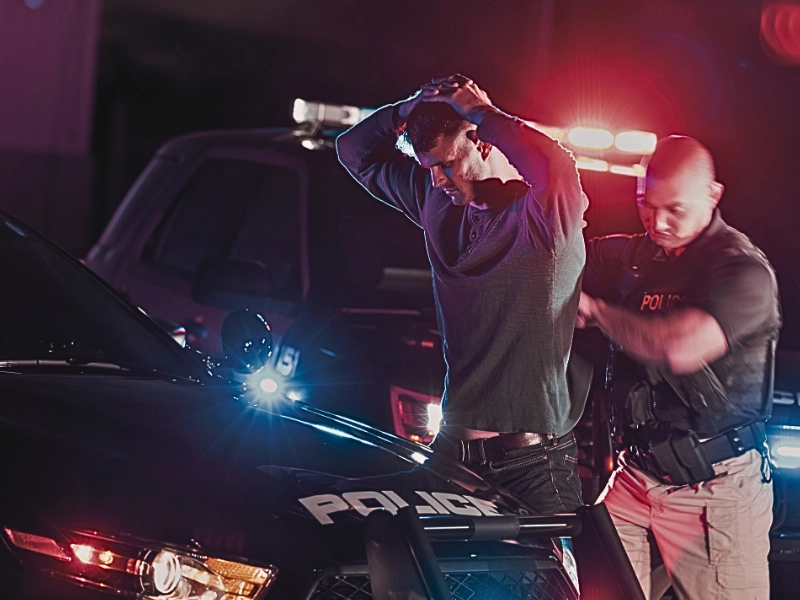In Minnesota, defendants may face misdemeanor or felony theft charges. Specific charges and sentences imposed will depend on the circumstances of the alleged offense and the value of the stolen property. Simple theft can quickly become felony theft charges if the property or item you allegedly stole is worth over $1,000. Prior theft convictions and the type of stolen item could also impact the severity of theft charges and potential penalties. An aggressive criminal defense lawyer can help you build an effective defense against theft charges. So, start working with a skilled lawyer soon after discovering you are facing charges for stealing.
![Simple Theft Can Quickly Turn Into Felony Theft Charges [Infographic] 2 A girl holding her phone with her black bag and a guy whose trying to steal her wallet.](https://kellerlawoffices.com/wp-content/uploads/2024/02/Simple-Theft-Can-Quickly-Turn-Into-Felony-Theft-Charges_57696249_Altered_Keller.webp)
(Article continues below infographic)
![Simple Theft Can Quickly Turn Into Felony Theft Charges [Infographic] 1 infographic on how simple theft can turn into felony charges](https://kellerlawoffices.com/wp-content/uploads/2018/12/Keller_2018_Dec_Simple-Theft-Can-Quickly-Turn-Into-Felony-Charges-348x1024.jpeg)
______
Table of Contents
Is Stealing a Felony?
In Minnesota, stealing is a felony if the stolen property is worth more than $1,000. Felony offenses attract a prison sentence of at least a year. The higher the dollar value of the property or services stolen, the harsher the punishment.
Simple theft can become felony theft charges if you have previous theft convictions in the last five years. What’s more, the type of item taken could also affect the severity of charges you might face. Guns and controlled substances are examples of items that could turn a simple theft into felony theft charges.
Potential Defenses to Theft Charges
Claim of Ownership
This defense involves claiming that you are the lawful owner of the allegedly stolen item, property, or service. You can raise this defense if you have evidence to prove you own the property. Pictures, credit card statements, and receipts are some types of evidence that can help you prove property ownership.
Entrapment
Entrapment happens when a law enforcement officer encourages or pressures a person into committing an unlawful act. You could assert this defense if you stole the item in question because a law enforcement officer had asked or forced you to do so.
Intoxication
An intoxication defense can help you avoid a conviction if you can demonstrate you were intoxicated when the theft incident happened and that the intoxication caused you to steal. Besides proving intoxication, you must also show you had no intentional to steal.
Mistaken Identity
You may use this defense if no recording of the purported criminal incident exists or if the available recording is substandard. This defense involves claiming that another person committed the offense and that the police officer made an error in identifying you as the offender.
You can, for example, claim that you were at a different location at the time of the alleged offense. You can then support your claim with evidence, including eyewitness testimony, workplace time cards, video surveillance footage, hotel reservations, and credit card statements.
No two theft cases are the same. Each case has its unique facts and circumstances. So, a defense effective for one theft case might be ineffective for the next. That’s why you need to involve a knowledgeable criminal defense lawyer from the beginning. The lawyer can help you determine the best defense for your situation.
Misdemeanor vs Felony Theft Charges
Depending on the nature of the crime, Minnesota theft offenses may be charged as a misdemeanor or a felony, and sometimes there is a fine line between the two. Theft convictions in Minnesota encompass a number of different crimes, including:
- Stealing money, merchandise, services, or property
- Stealing services or property by false representation or swindle
- Taking, using, transferring, or concealing another person’s property without consent
- Renting personal property without paying for it
- Taking or driving another person’s car without permission
- Filing false medical claims
Misdemeanor Theft Charges
In Minnesota, misdemeanor theft occurs when a person steals merchandise, services, or property valued at less than $500. A misdemeanor theft charge is punishable by fines up to $1,000 and jail time up to 90 days. If the property is valued between $500 and $1,000, the crime becomes a gross misdemeanor with fines up to $3,000 and jail time up to one year. If the person who commits a gross misdemeanor has a recent history of theft, the charge becomes a felony offense with fines up to $10,000 and a jail sentence up to five years.
Felony Theft Charges
A person who commits theft can face felony charges with fines between $20,000 and $100,000 and a potential prison sentence of 10 to 20 years, if the following occurs: the stolen property is valued between $5,000 and $35,000; the stolen property is an explosive or trade secret; the stolen property is a Schedule I or Schedule II controlled substance; or the use of a firearm creates bodily harm or the firearm is stolen during the crime.
When theft is committed in Minnesota, the perpetrator is liable to the property owner for the amount equal to the stolen property’s value, in addition to criminal penalties. The offender must also pay the property owner punitive damages equaling $50 or up to 100% of the property’s value – whichever value is greater. Under Minnesota law, felony theft charges can have a life-long impact. With a criminal record, a person may encounter problems finding housing, getting a job, and qualifying for a credit card or a loan. In some occupations, even a petty theft misdemeanor can result in a job suspension or termination. Hiring a criminal defense lawyer can help defendants reduce theft charges and, as a result, reduce the impact on their lives. In some cases, an attorney can help achieve an expungement of theft charges.





